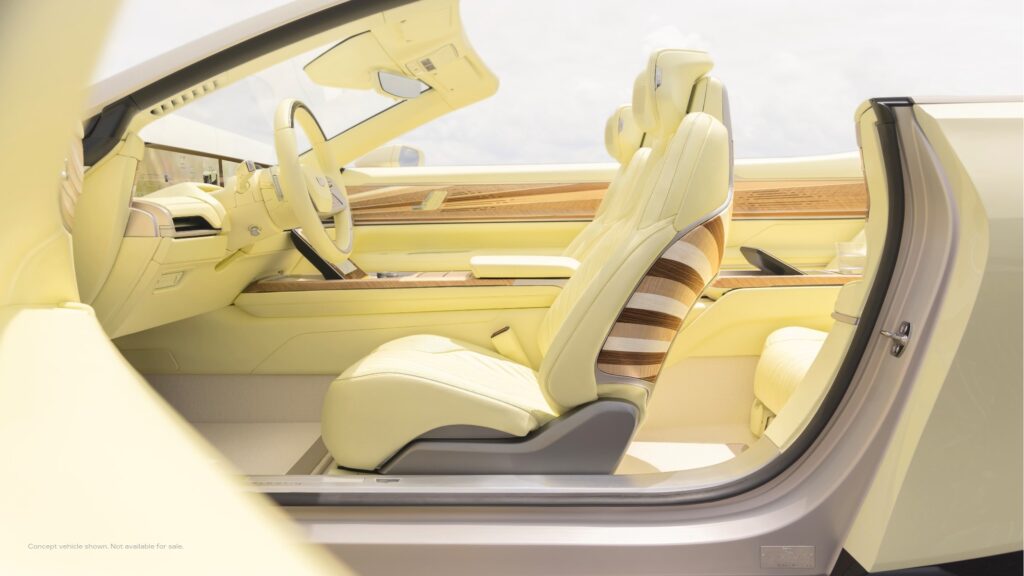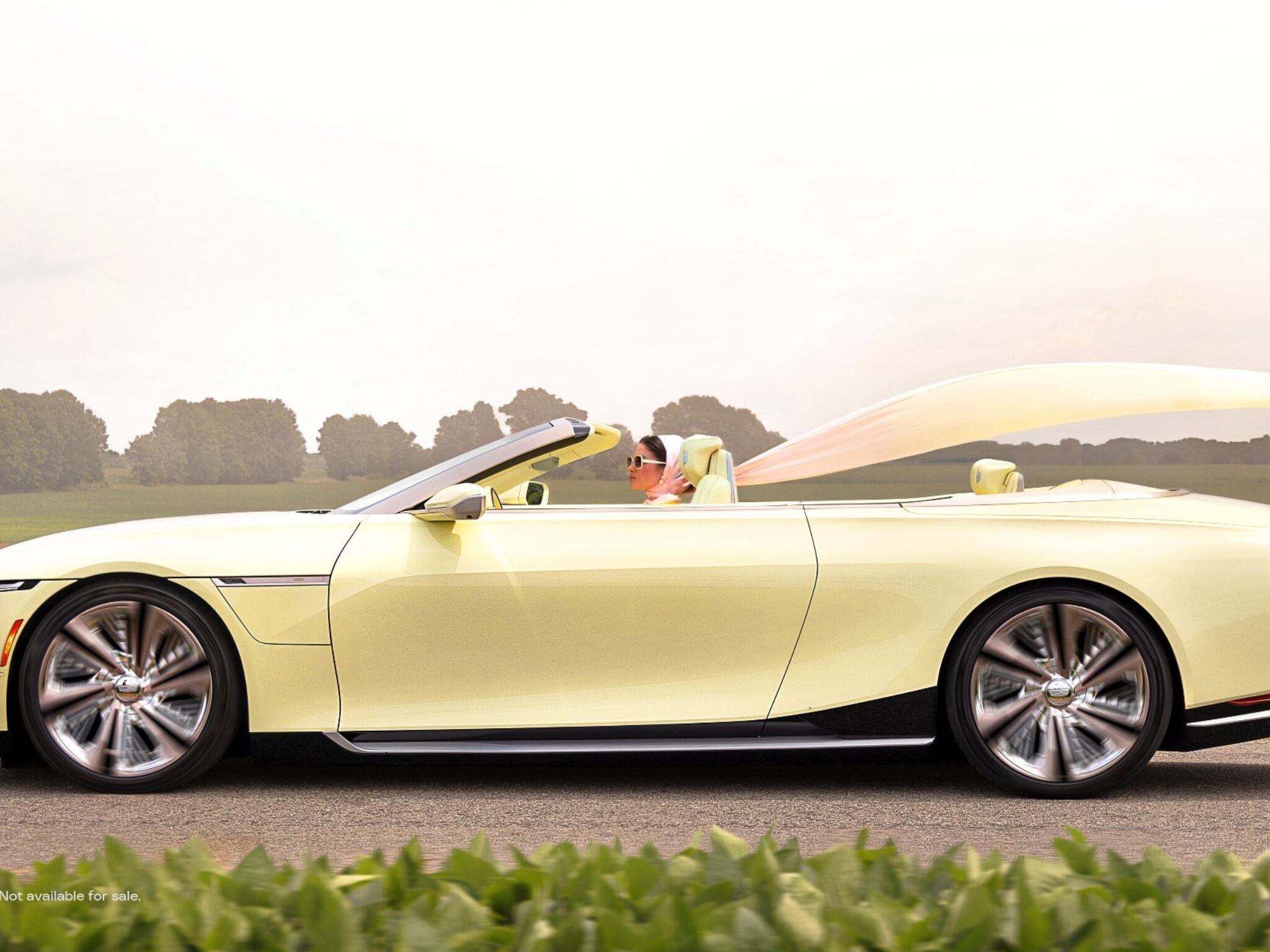Cadillac Releases Sollei Concept EV with Interiors Featuring MycoWorks’ Mycelium Biomaterials
3 Mins Read
General Motors has unveiled a new concept EV under its Cadillac division, which features biomaterials made from MycoWorks’ mycelium.
We’ve heard a lot of comparisons between electric vehicles (EVs) and alternative proteins, but could the two combine for a better on-road future?
In Cadillac Sollei, an all-electric convertible concept from General Motors, several parts of the interior feature mycelium-based materials from Californian startup MycoWorks (which GM’s venture arm invested in two years ago).
The charging mats on the luxury four-seater’s console and the door map pockets contain biomaterials jointly developed by MycoWorks and Cadillac using the former’s Fine Mycelium tech. Intended as a sustainable alternative to leather that provides superior strength and offers weight reduction improvements, they will also be used for custom accessories, such as cardholders.

Cadillac concept showcases future mycelium applications
MycoWorks is one of a number of companies working with mycelium, the root structure of mushrooms. It has raised $187M to date, including a $125M Series C round in 2022.
The company has already produced vegan leather for bags, shoes, clothing and furniture using its flagship biomaterial Reishi for a number of big brands, including Hermès and Ligne Roset.
But the Fine Mycelium material used in the Cadillac concept EV is different from Reishi. “The automotive-grade material is grown, re-tanned, and finished differently, rendering a distinct material from MycoWorks’ flagship biomaterial, Reishi. The material is still under development and the specific properties are proprietary information,” MycoWorks CEO Matt Scullin told AgFunderNews.
Its mycelium is grown via solid-state fermentation using feedstocks like recycled sawdust, limestone and wheat bran. These are then inoculated with fungi strains to form sheets of foamy mycelium, which can be harvested and treated at tanneries like animal hide.
Fine Mycelium involves a proprietary process that engineers mycelium cells during their growth to form interlocking cellular structures for enhanced strength, durability, and performance. The cells are grown in trays under precise conditions, with each sheet having a unique code that can allow MycoWorks to monitor and fine-tune the material to deliver customised specifications for designers.
The premium biomaterial features an “iridescent finish” in a soft hue colour palette inside Sollei. Since the Cadillac EV is a concept, it doesn’t represent a revenue stream for MycoWorks, but “showcases potential future applications for the new material developed using MycoWorks’ Fine Mycelium technology”, Scullin said.

The environmental perils of leather production
Sollei is Cadillac’s first concept EV to incorporate the mycelium material, which “reflects Cadillac’s mission to pioneer renewable automotive resources”.
Conventional leather is derived from animal hide, and has previously been thought of as a byproduct of the meat and dairy industries. But critics argue it is more a co-product than a byproduct – and in many cases, it’s the primary product.
Producing leather is an energy– and water-intensive process linked to deforestation and biodiversity loss, and generates lots of hazardous chemicals during tanning, which are a detriment to human health. It also has a much higher carbon footprint, at 110kg of CO2e per square metre, compared to synthetic and plant-based alternatives.
But synthetic leather contains plastic, which takes between 20 to 500 years to break down and decompose. Plastic production is responsible for 3.4% of global emissions, and its contribution is set to double by 2060. Plastic-based leather additionally also sheds toxic microplastics that can enter waterways – thus destroying aquatic life, and our food system.
This is why MycoWorks uses mycelium. Leather production can generate as much as 110kg of CO2e per sq m, but in comparison, materials with Reishi emit just 2.76-5.8kg of CO2e for the same amount of material. This is key for automotive consumers now, with global research suggesting that reduced carbon footprint is among the sustainability priorities for drivers now.
This is the second instance of a car using leather sourced from mushrooms. In 2022, Mercedes-Benz used mushroom and cactus leather, bamboo fibres, as well as biofabricated silk, in the Vision EQXX concept EV.



